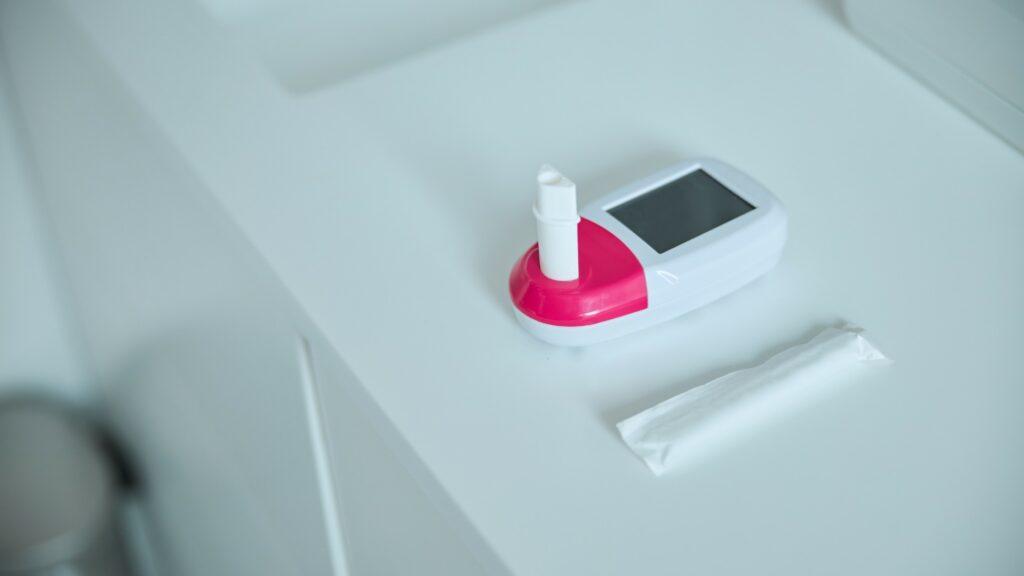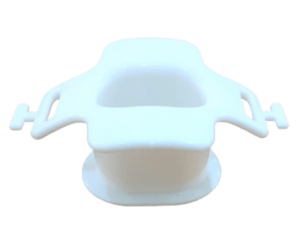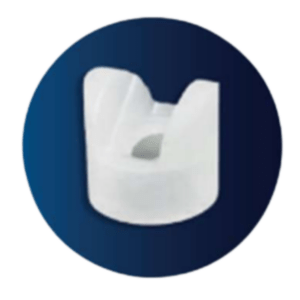Are you looking to optimize your respiratory therapy or ensure a safe breathing environment? In this in-depth blog, we will explore a wide range of respiratory device accessories that can greatly improve your respiratory care. From respiratory masks and filters to tubing, cannulas, CPAP masks, hoses, nebulizer kits, inhaler spacers, circuits, and humidifier chambers, we’ll cover it all. Discover the perfect respiratory mask for your needs, understand the importance of respiratory filters, and learn about the different types of respiratory tubing.
Types of Respiratory Device Accessories
There are various types of respiratory device accessories that are designed to enhance respiratory therapy and provide better care for individuals with respiratory conditions. Here are some common types:
- Respiratory Masks: These masks cover the nose and mouth to provide protection and deliver air or medication directly to the respiratory system.
- Respiratory Filters: Filters play a crucial role in eliminating contaminants, allergens, and particles from the air prior to its administration to the patient.
- Respiratory Tubing: Tubing is used to connect the respiratory device to the mask or cannula, allowing for the delivery of air or medication.
- Oxygen Cannulas: These are small, flexible tubes that deliver oxygen directly to the patient’s nose for oxygen therapy.
- CPAP Masks: Continuous Positive Airway Pressure masks are used for sleep apnea treatment and deliver a constant flow of air to keep the airway open during sleep.
- CPAP Hoses: These hoses connect the CPAP machine to the mask and deliver the pressurized air.
- Nebulizer Kits: Nebulizer kits are used to convert liquid medication into a fine mist for inhalation, making it easier for individuals to receive medication for respiratory conditions.
- Inhaler Spacers: Spacers are used with inhalers to improve medication delivery by ensuring that the medication reaches the lungs effectively.
- Respiratory Circuits: These circuits deliver gases to patients during respiratory therapy and can be customized for different treatment needs.
- Humidifier Chambers: Humidifier chambers add moisture to the delivered air, preventing dryness and irritation of the respiratory system.
By understanding the different types of respiratory device accessories, healthcare professionals and individuals with respiratory conditions can make informed decisions to improve therapy outcomes.
Choosing the Right Respiratory Mask
Whether you require protection from airborne particles or need a mask for sleep apnea therapy, finding the right respiratory mask is crucial. Explore mask styles, filtration capabilities, and factors to consider for optimal fit and comfort.
Choosing the right respiratory mask is crucial for ensuring effective respiratory protection and comfort. When selecting a respiratory mask, it is important to consider factors such as your specific respiratory needs, mask fit, size, and adjustability. Firstly, identify the type of respiratory hazards you need protection from, whether it is particulate matter, gases, or both. This will help you determine the appropriate mask type. Secondly, ensure the mask fits securely over your nose and mouth, forming a tight seal to prevent air leakage. A proper fit is essential for effective protection. Additionally, consider the size and adjustability of the mask to ensure a comfortable and customized fit. Proper selection of a respiratory mask will help you breathe safely and comfortably in various environments and conditions.
Understanding Respiratory Filters
Respiratory filters play a vital role in providing clean and safe air for respiratory devices. They are significant in filtering out contaminants and allergens, and have different filter types based on their efficiency levels. Maintenance tips are to be followed to ensure optimal filtration performance.
These filters are designed to capture and trap microscopic particles, preventing them from entering our respiratory system. The effectiveness of a respiratory filter depends on its filtration efficiency, which is usually indicated by a filtration rating such as N95 or P100. N95 filters are capable of filtering out 95% of airborne particles, while P100 filters provide even higher filtration efficiency. It is important to choose the appropriate filter based on the specific respiratory hazards you may encounter. Regular replacement of filters is necessary to maintain their effectiveness. Using high-quality respiratory filters can help ensure cleaner and safer air, protecting our respiratory health in various environments.
A Guide to Respiratory Tubing
Respiratory tubing is an essential component of many breathing devices. Respiratory tubing is a crucial component of respiratory devices that helps deliver air or oxygen to patients. It is designed to provide a safe and efficient pathway for airflow, connecting the respiratory device to the patient interface. Respiratory tubing is available in various lengths, materials, and configurations to suit different medical settings and patient needs. It is important to choose the right type of tubing that is compatible with the respiratory device being used. Regular cleaning and maintenance of respiratory tubing are essential to ensure optimal performance and prevent the accumulation of dust or contaminants. Proper care and inspection of the tubing help maintain its integrity and prevent any potential disruptions in airflow.
Oxygen Cannulas
For individuals requiring supplemental oxygen, oxygen cannulas are indispensable accessories. Gain a comprehensive understanding of their benefits, types, and usage in oxygen therapy. We’ll discuss nasal cannulas, transtracheal cannulas, and their role in improving oxygen delivery and enhancing quality of life.
Oxygen cannulas are vital respiratory accessories used to deliver supplemental oxygen to patients. These small, flexible tubes are designed to fit comfortably in the nostrils, allowing oxygen to flow directly into the lungs. Oxygen cannulas are available in various sizes and styles to accommodate different patient needs. They are lightweight, easy to use, and provide a continuous and controlled flow of oxygen. The prongs of the cannula are inserted into the nostrils, while the other end is connected to an oxygen source. Oxygen cannulas are essential for patients requiring oxygen therapy, providing them with the necessary oxygen levels to support respiratory function and improve overall well-being.
CPAP Masks: Choosing the Right Fit
Continuous Positive Airway Pressure (CPAP) masks are vital for sleep apnea treatment. The process of selecting the perfect CPAP mask requires considering factors such as mask style, cushion types, and noise levels.A well-fitted CPAP mask can significantly improve your sleep quality and overall well-being.
Choosing the right CPAP mask is crucial for individuals with sleep apnea to ensure optimal comfort and effective treatment. CPAP masks come in different styles, such as nasal masks, full face masks, and nasal pillow masks, each catering to specific needs and preferences. It’s essential to consider factors like mask size, fit, and compatibility with the CPAP machine. A well-fitted CPAP mask should provide a secure seal without causing discomfort or air leaks. It should also allow for easy adjustment and minimal noise during use. By selecting the right CPAP mask, individuals can experience improved sleep quality and better management of their sleep apnea symptoms.
CPAP Hoses: A Guide to Maintenance
CPAP hoses are responsible for delivering continuous airflow during sleep therapy. Proper maintenance of CPAP hoses is essential to ensure effective and hygienic therapy for individuals with sleep apnea. Regular maintenance and cleaning are crucial to prevent the accumulation of dirt and allergens. It’s recommended to wash the CPAP hoses with mild soap and water, ensuring thorough rinsing and drying before use. Additionally, inspecting the hoses regularly for any signs of wear or damage is important for optimal functionality. Replacing the hoses when necessary and using hose covers can further enhance durability and cleanliness. By following proper maintenance practices, individuals can extend the lifespan of their CPAP hoses and promote a healthier sleep environment.
Nebulizer Kits: An Essential Overview
Nebulizer kits are vital for efficient medication delivery in respiratory treatments. Nebulizer kits play a vital role in respiratory treatments by converting liquid medication into a fine mist that can be inhaled. These essential accessories consist of a nebulizer chamber, tubing, and a mouthpiece or mask. The liquid medication is placed in the nebulizer chamber, where it is transformed into a breathable mist using compressed air or ultrasonic vibrations. Nebulizer kits are commonly used to deliver medication for conditions such as asthma, COPD, and respiratory infections. They offer a convenient and effective way to administer medication directly to the lungs, providing quick relief and improving respiratory function. Understanding the components and usage of nebulizer kits is essential for effective and safe medication delivery in respiratory therapies.
Inhaler Spacers: Improving Medication
Inhaler spacers play a key role in enhancing medication delivery for individuals using inhalers. Inhaler spacers are valuable accessories that enhance the effectiveness of medication delivery in respiratory treatments. These devices are designed to be used with metered-dose inhalers (MDIs) and help improve the delivery of medication directly to the lungs. Inhaler spacers act as a reservoir, allowing the medication to be released into the spacer before inhalation. This ensures that a larger portion of the medication reaches the lungs and reduces the risk of medication deposition in the mouth or throat. Inhaler spacers are particularly beneficial for individuals who have difficulty coordinating their inhalation with the release of medication from the inhaler. They provide a more efficient and reliable method of medication administration, resulting in better treatment outcomes for respiratory conditions.
Exploring Respiratory Circuits
Respiratory circuits are essential for delivering gases to patients during respiratory therapy. There are different types of circuits available, such as non-rebreathing and ventilator circuits, and their applications in various treatments. Respiratory circuits play a crucial role in delivering gases to patients in various respiratory treatments. These circuits consist of interconnected tubes, connectors, and valves that enable the smooth passage of oxygen, air, or other gases into the patient’s airway.
They are designed to ensure efficient and controlled delivery of gases, allowing healthcare professionals to adjust the oxygen concentration, pressure, and flow rates as needed. Respiratory circuits can be used in various settings, including hospitals, clinics, and homecare environments. Understanding the different types of respiratory circuits and their components is essential for healthcare providers to deliver optimal respiratory therapy and support patients with respiratory conditions.
Humidifier Chambers: Enhancing Therapy
Humidifier chambers are crucial accessories in respiratory therapy, providing optimal humidification for better outcomes. They have importance in preventing dryness and irritation in the airways and improving overall comfort during therapy.
Humidifier chambers play a crucial role in enhancing respiratory therapy by providing optimal moisture levels to the inhaled air. These chambers are designed to add humidity to the respiratory gases, reducing dryness and irritation in the airway. By maintaining an appropriate level of humidity, they help improve the effectiveness of respiratory treatments and enhance patient comfort. Humidifier chambers are available in different sizes and designs, allowing healthcare providers to choose the most suitable option based on patient needs and therapy requirements. Their efficient humidification capabilities contribute to better respiratory outcomes and a more comfortable experience for individuals undergoing respiratory therapy.
Respiratory Device accessories from Leading Indian Manufacturers
Mouth Guard for Bronchoscopy
ODID Medical is one of the top manufacturers and global suppliers of respiratory device accessories, including the Mouth Guard for Bronchoscopy. Designed with utmost precision, this mouth guard is made out of high-quality materials, ensuring durability and reliability. It comes with an adjustable elastic strap, providing a secure and comfortable fit for patients during bronchoscopy procedures. With ODID Medical’s Mouth Guard for Bronchoscopy, healthcare professionals can effectively access the airways while prioritizing patient comfort and safety.
Silicone Mouthpiece
Ami Polymer Pvt. Ltd. is India’s leading manufacturer and global supplier of respiratory device accessories, offering the Silicone Mouthpiece. This device is specifically designed to be inserted into a patient’s mouth, facilitating easy access to the airways during respiratory procedures. The silicone mouthpiece is attached to the second-stage regulator, allowing for improved airflow and comfortable breathing. Crafted with high-quality silicone or rubber materials, it ensures a secure and reliable connection between the regulator and the patient’s mouth. Ami Polymer’s Silicone Mouthpiece is a trusted choice for healthcare professionals seeking efficient and comfortable respiratory device accessories.
Safey Turbine
Safey Medical Devices Private Limited introduces the Safey Turbine, a cost-effective solution for spirometers. Safey Turbine is designed with a clear, pre-calibrated, and highly accurate turbine. Its hygienic packing ensures the integrity and cleanliness of the product. Each turbine can be used up to 600 times, providing an economical and long-lasting option for spirometry testing. With Safey Turbine, healthcare facilities can confidently conduct respiratory tests while maintaining accuracy and hygiene standards.
Medzell: Empowering Global Healthcare with Indian Medical Devices
Medzell is a forward-thinking B2B platform that is revolutionizing the healthcare industry by promoting Indian medical devices in emerging markets. With its futuristic approach, Medzell provides a convenient and efficient platform for connecting medical device manufacturers with buyers around the world. Through Medzell, healthcare professionals and organizations gain access to a diverse range of high-quality Indian medical devices, including respiratory device accessories, to meet their specific needs. Medzell’s commitment to excellence, reliability, and innovation ensures that users can discover and procure cutting-edge medical devices that enhance patient care and treatment outcomes. With Medzell, the future of sourcing and acquiring medical devices is within reach, facilitating the advancement of healthcare globally.
Conclusion
In conclusion, this comprehensive guide has provided valuable insights into respiratory device accessories. From finding the perfect respiratory mask to understanding the importance of filters, you have gained knowledge on various aspects of respiratory care. Exploring tubing, cannulas, CPAP masks, nebulizer kits, and other accessories has expanded your understanding of their roles in enhancing respiratory therapy. Additionally, you have delved into the significance of respiratory circuits and humidifier chambers, learning how they optimize treatment outcomes. Remember to follow maintenance tips for longevity and efficiency. Lastly, consider Medzell, an innovative B2B platform promoting Indian medical devices in emerging markets, to further enhance your respiratory care journey. Together, let’s prioritize your respiratory health and well-being.





